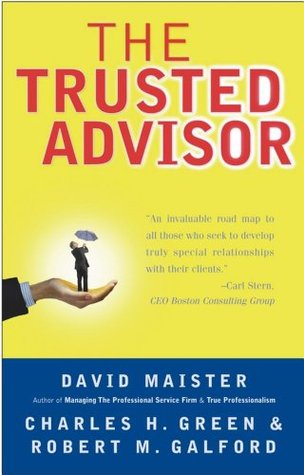More on this book
Kindle Notes & Highlights
“The only way to influence someone is to find out what they want, and show them how to get it.”
Ironically, the professions attract people who are prone to these fears. More often than not, we professionals are high achievers who have consistently overcome our fears through constant application of skill and hard work in the pursuit of technical mastery.
The kinds of people who typically succeed in professional service firms are often driven, rational, and meritocratic, with a great need to achieve. It is the natural thing for such people to stay focused on their own individual performance (something that is reinforced by many firm cultures), and to look for confirmation that what they are doing is all right. This is not a situation conducive to building skills in developing trust. It is in some sense a wonder that so many do so well.
Insecurity (the opposite of self-confidence) is a common source of trust problems. We have already noted the common temptation, in a client conversation, of jumping too soon to “the answer.” It is only human for the client to want to be understood before being ready to listen to advice. We know that, but it takes self-confidence to wait and believe that after listening and brainstorming, we will still have ample time and talent to discover the technical answer.
Ego strength is not the same as self-confidence. It is the ability to focus on the consultative relationship process, rather than on credit or blame attached to the search. There is an old saying, “It is amazing what you can achieve if you are not wedded to who gets the credit.”
The flip side of credit is blame. A tendency to blame others, or circumstances, is generally a recipe for unhappiness in life. It is even more surely and quickly a recipe for failure in becoming a trusted advisor. Clients (and professional firms) place a great deal of value on those who take on great amounts of personal responsibility.
At this level, what would appear to be the opposite of blaming becomes clear for what it is: merely another form of self-orientation. Just as wanting all the credit and none of the blame is self-focused, so is taking all the responsibility. Neither is client-focused.
Ego strength allows one to focus on the matter at hand, and not on who gets blame or credit for getting there.
But it is often easier to first change one’s actions (adopt caring behaviors) as a way to achieve caring than it is to change one’s mental state (which takes more time).
From certain behaviors (attention paid, interest shown, advance work done, empathetic listening), we infer the internal state we call sincerity.


